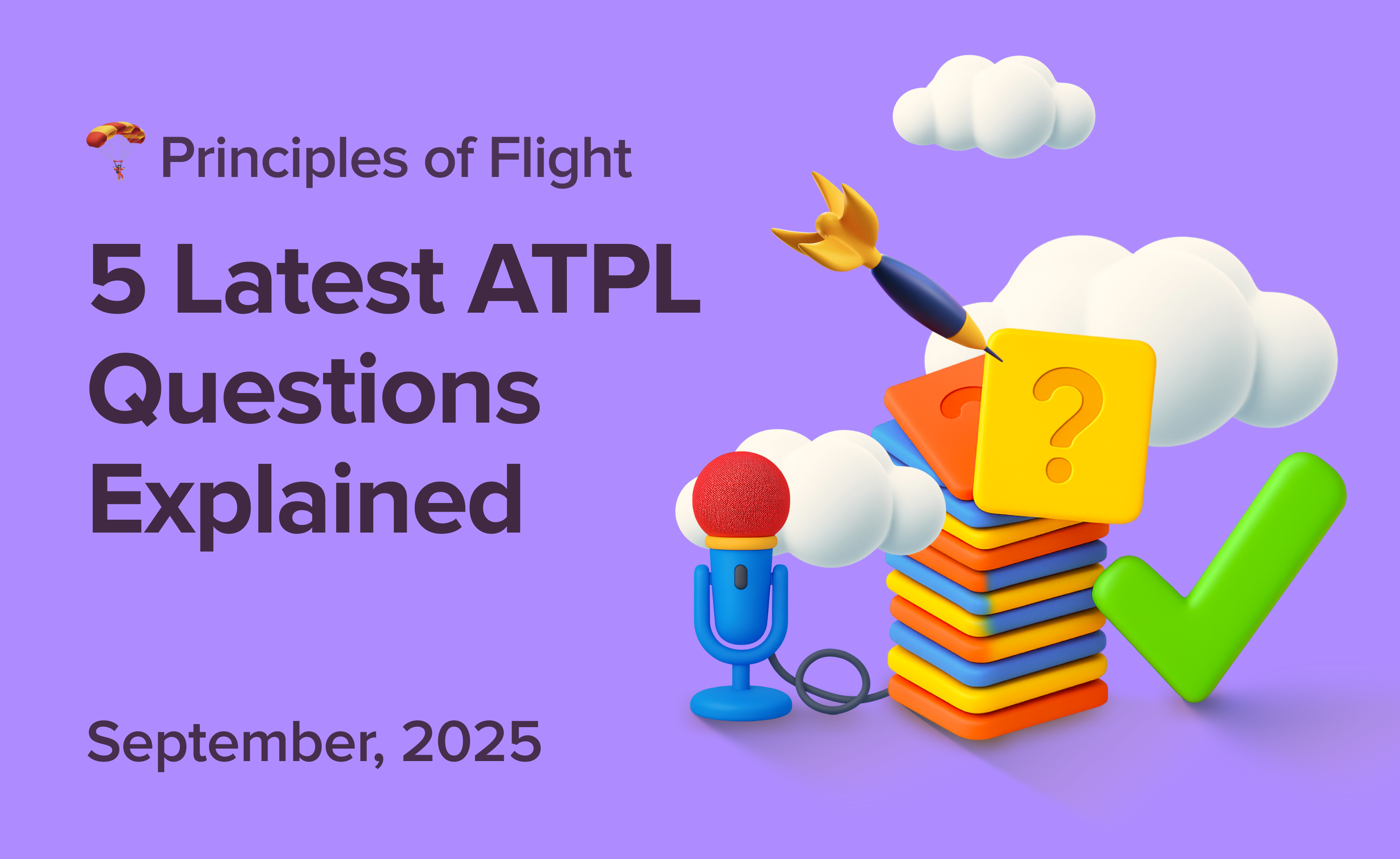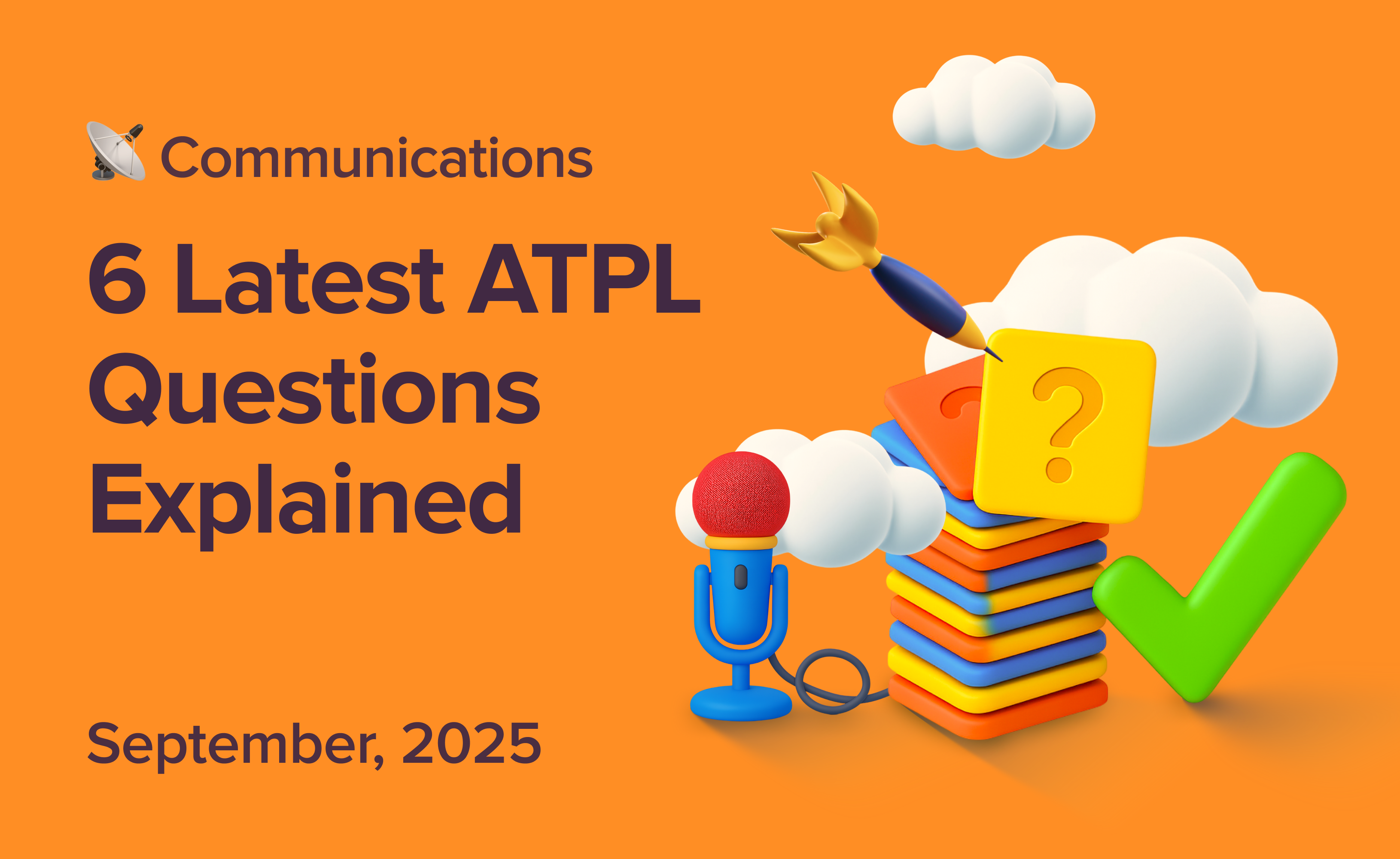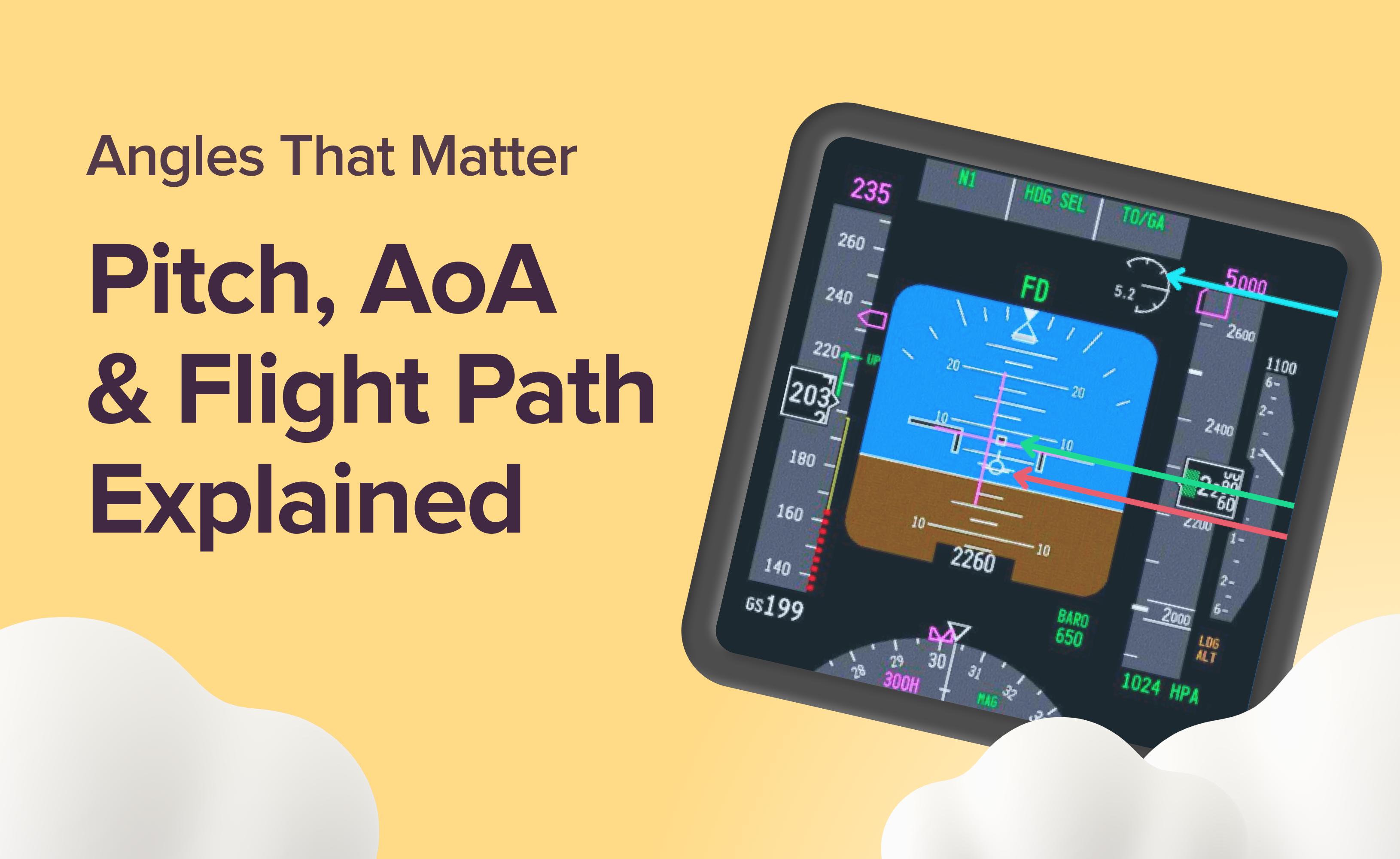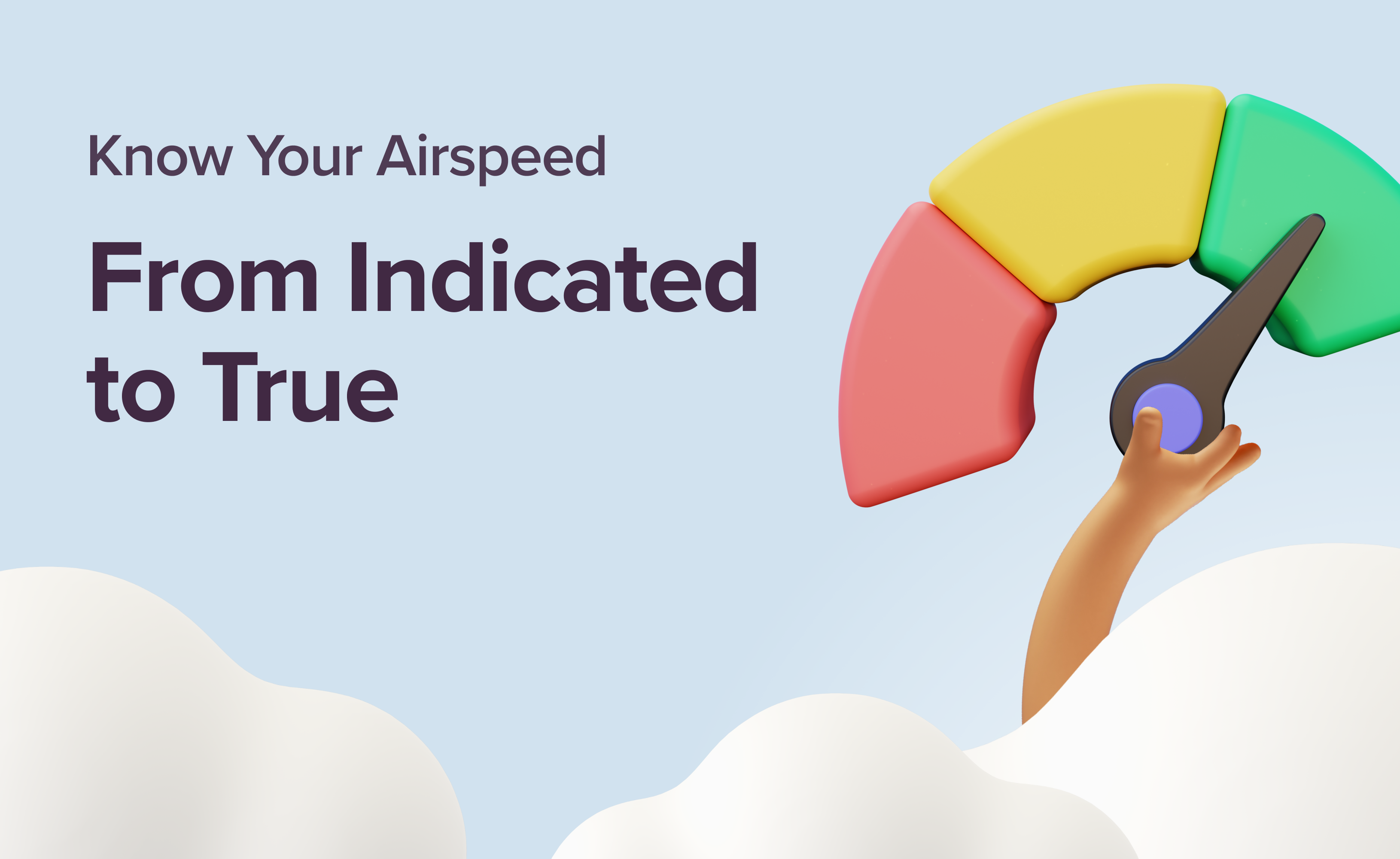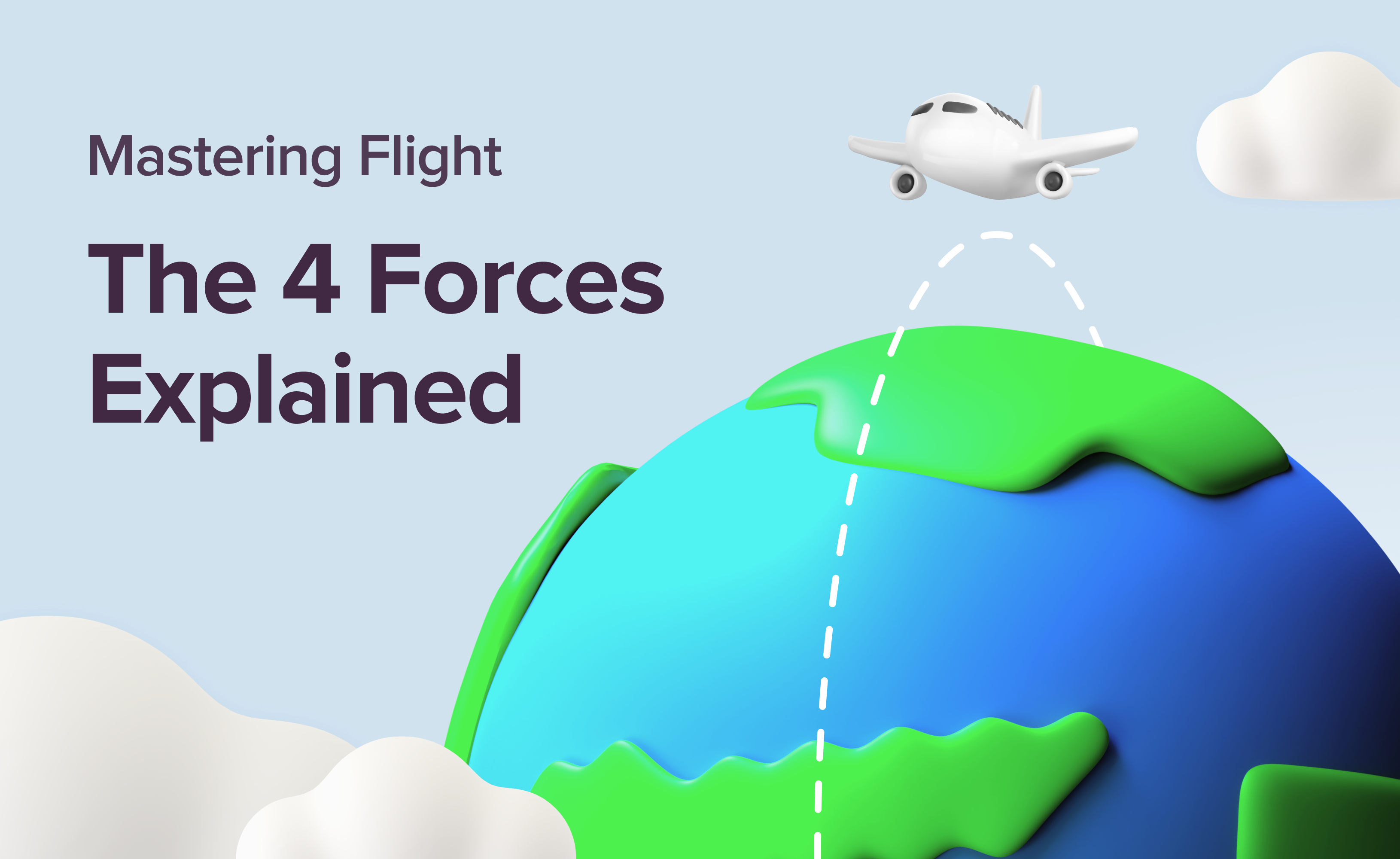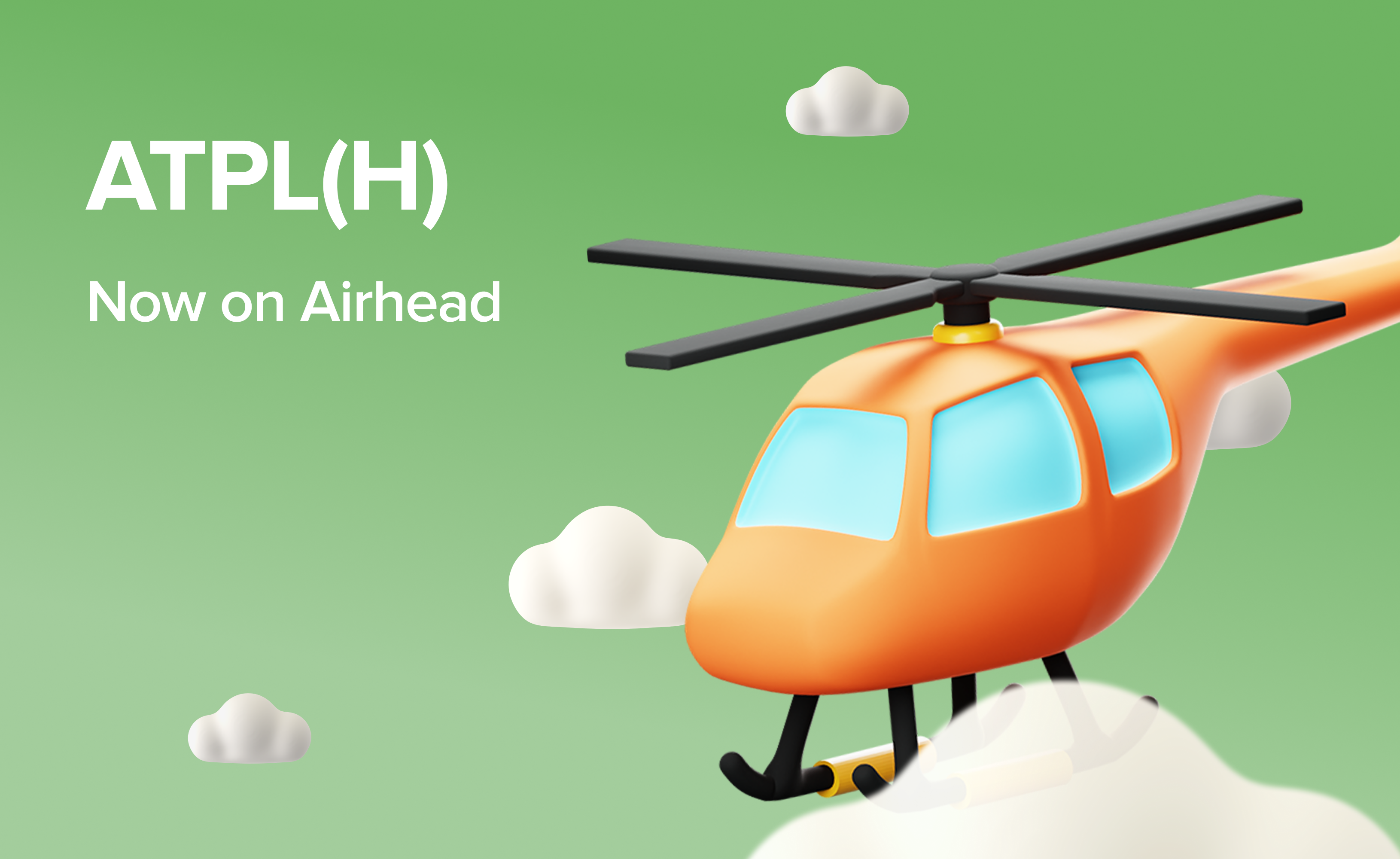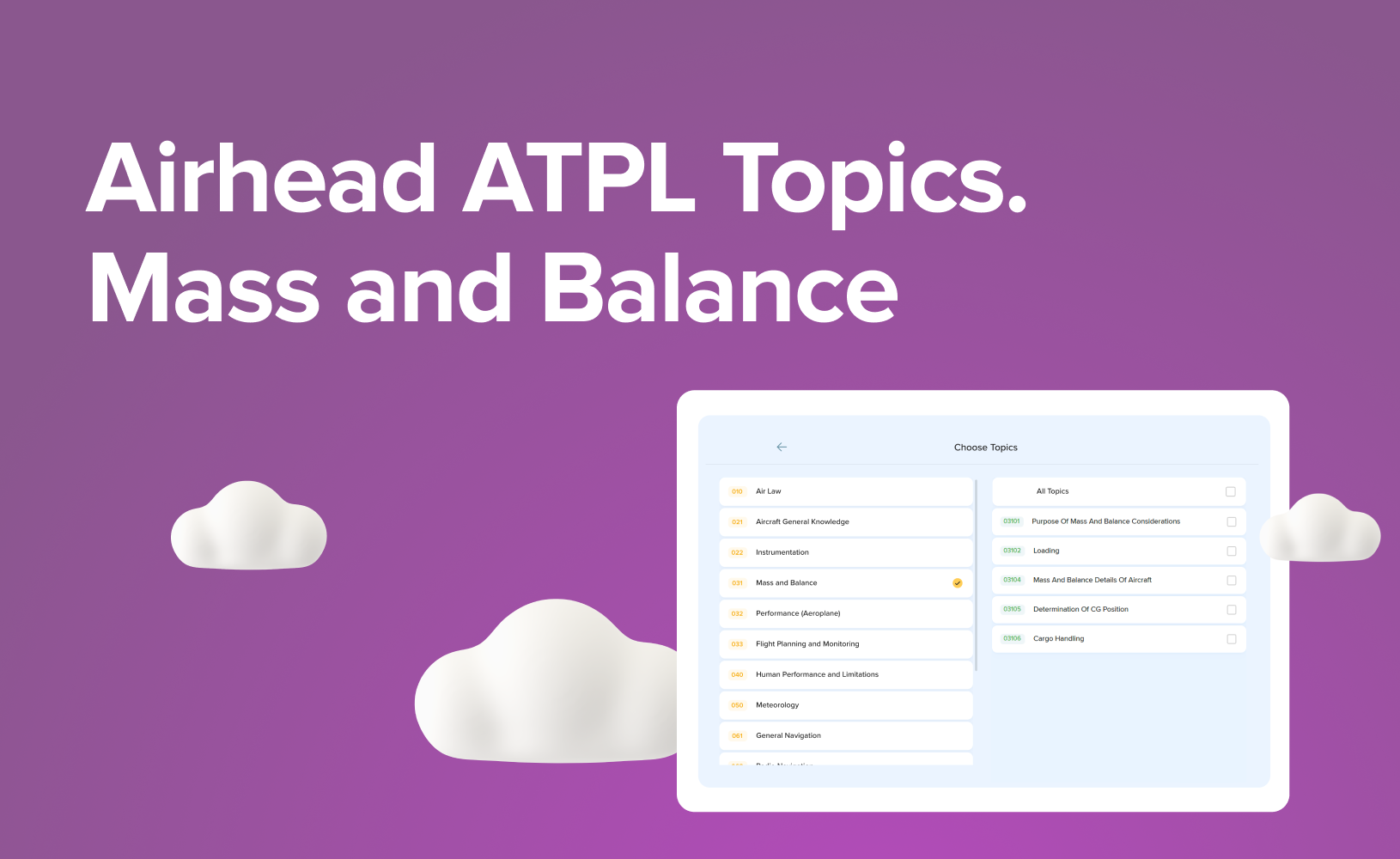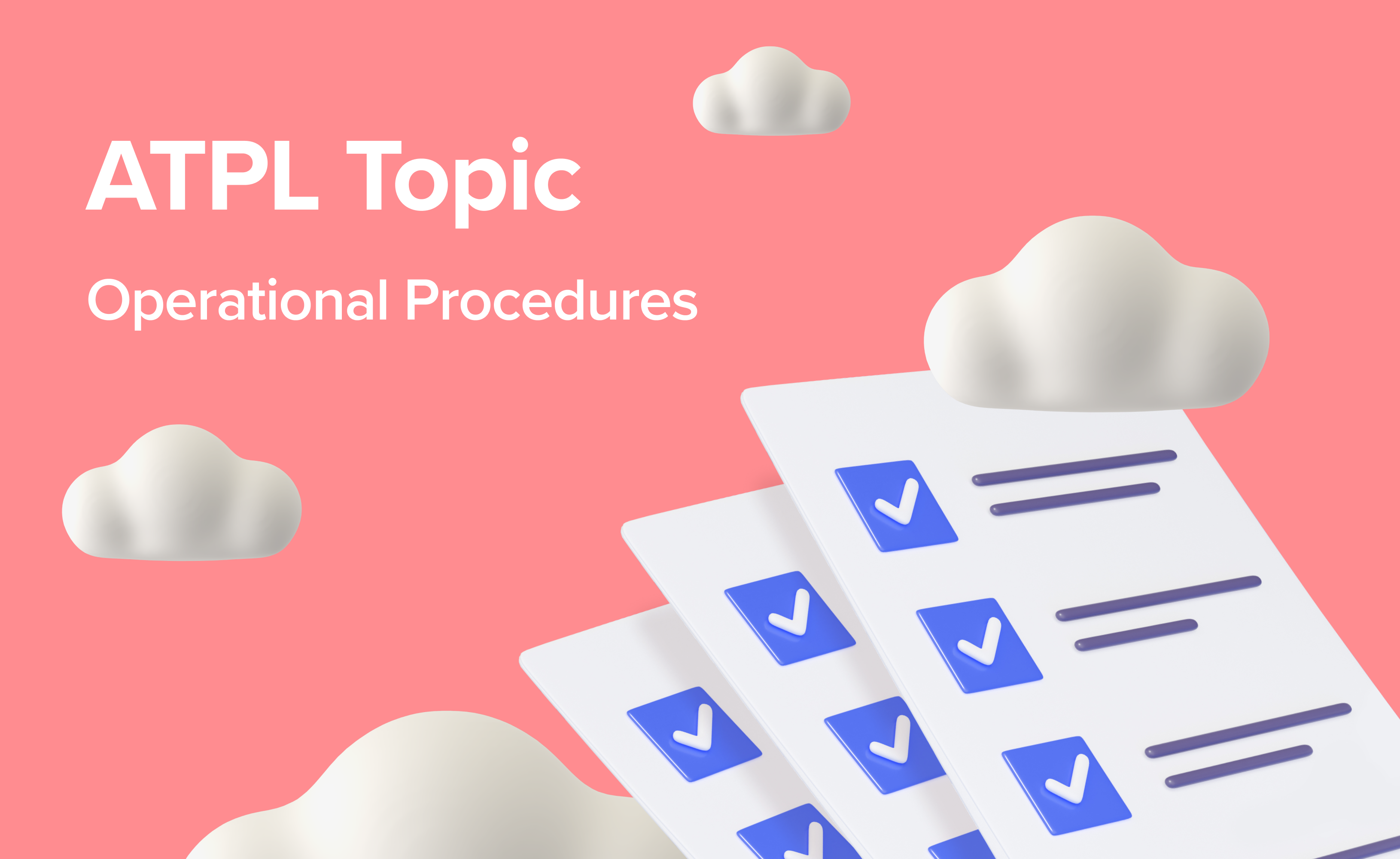From Alpha to Zulu: Understanding Pilot Language

We've all experienced those moments when we mishear something. It leads to confusion and possible disputes. And now imagine a cockpit where pilots from different nationalities seamlessly communicate, ensuring safety and efficiency in the skies. How is such precision achieved?
The answer lies in "pilot speak" — a particular way of communication designed to bridge linguistic barriers and keep the skies clear. In this blog post, we'll unravel the mysteries of aviation language, exploring its origins, structure, and significance. From the use of the phonetic alphabet — Alpha to Zulu — to standard phraseology, we'll decode the language of the skies and provide insights into its daily use. Whether you're an aviation enthusiast, a student pilot, or simply curious, join us on this linguistic journey from Alpha to Zulu. We'll also share handy tips to help you memorise it effortlessly.
What is Pilot Language?
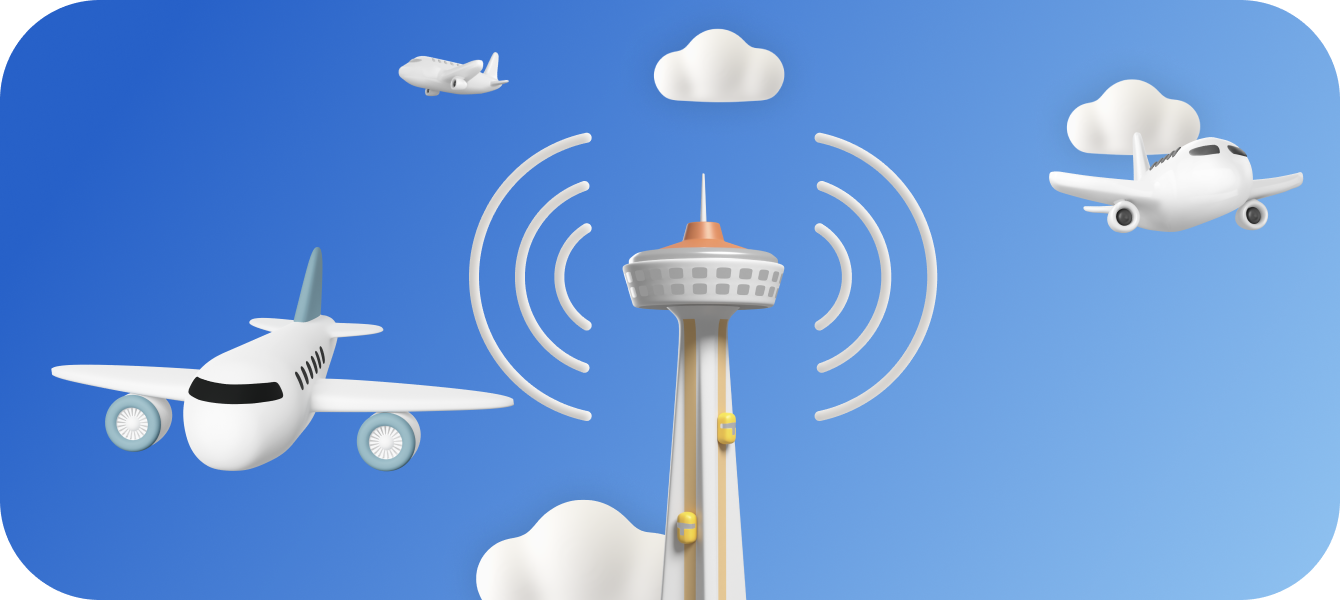
Pilot language, often referred to as "pilot speak" or aviation language, is a specialised form of effective communication used between pilots and air traffic control (ATC). It relies on standard phraseology, including the ICAO Phonetic Alphabet, to ensure clear and concise exchanges during flight operations.
The origins of pilot language can be traced back to the early days of aviation when pilots needed a reliable means of communication to navigate the skies safely. In the early 1950's the International Civil Aviation Organisation recommended aviation language for aeronautical radiotelephony communications. That is why it is typically referred to as ICAO English. This decision was influenced by the dominance of English-speaking countries in the aviation industry.
After all revisions and further studies, the revised alphabet was published on 1 November 1951.
Since then, pilot language has become a worldwide practice adopted by pilots and air traffic controllers personnel across the globe. It ensures uniformity and consistency in communication, regardless of the pilots' nationalities or languages spoken.
Today, the English language serves as the official language in aviation, being widely spoken across approximately sixty countries. In fact, non-native English speakers outnumber native speakers in the aviation community by about three to one.
Language Proficiency Requirements for Pilots

Since we are talking about the language, let's briefly repeat the ICAO language proficiency requirements for the pilot.
Since March 5th, 2008, all pilots and flight crew members involved in international aviation communication, including air traffic controllers, must pass a language proficiency exam as per ICAO regulations, unless they are already native English speakers.
The exam assesses language skills (speaking and listening ) across six levels. Levels 1 to 3 help recruit and train candidates, while Levels 4 to 6 establish minimum operational requirements. Pilots must meet at least ICAO Level 4 standards. A Level 6 rating exempts pilots from periodic re-evaluation.
The exam covers pronunciation, structure, vocabulary, fluency, comprehension, and interaction. Achieving Level 4 does not demand high grammatical correctness or traditional English language proficiency. This link has more details.
Vital Role of Aviation Language on the Past Cases

Given the diverse makeup of the crew, effective communication becomes paramount. It's essential for the flight crew members, cabin crew, air traffic controllers, and the broader aviation community to use a shared language. In history, incidents like the Tenerife Airport runway collision or the Charkhi-Dadri Mid Air collision underscore the critical importance of clear communication.
A) When the pilot radioed "We are at take-off," the controller misunderstood, thinking the aircraft was ready to begin the take-off roll. However, the aircraft had already started accelerating along the runway. This misinterpretation led to a collision with another aircraft in foggy conditions.
B) The controller's instruction to "Descend two four zero zero feet" was misinterpreted as “Descend 400 feet" due to the similarity between "two" and "to". This miscommunication resulted in the aircraft crashing into high ground.
In order to mitigate such risks and ensure flight safety, the aviation industry has established standardised communication protocols that utilise the phonetic alphabet of the International Civil Aviation Organisation (ICAO) and a set of lucid and succinct phrases. Let's have a closer look at them.
Decoding the ICAO Phonetic Alphabet
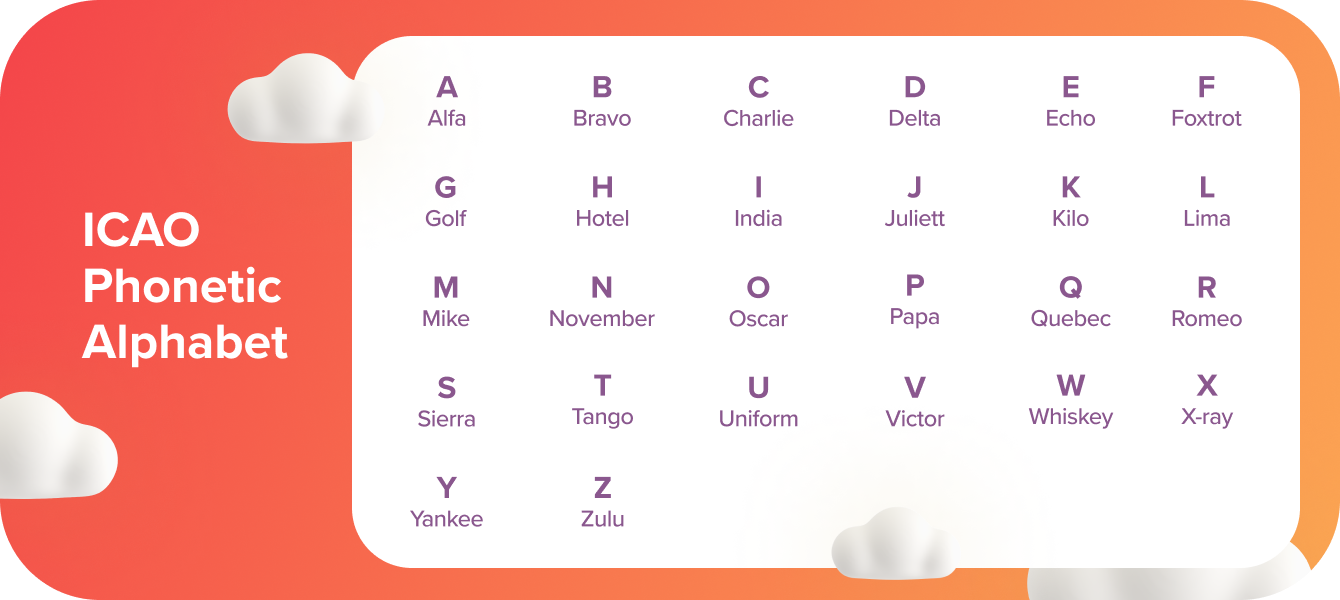
Many letters, when pronounced traditionally, can sound alike. “C” (cee) sounds very much like “D” (dee) or “E” (eee), or “T” (tee) and “Z” (zee). The aviation alphabet, known as the ICAO or NATO phonetic alphabet, eradicates ambiguity by ensuring each letter is distinct.
“C” becomes “Charlie”, “D” becomes “Delta”, “E” becomes “Echo”, “T” becomes “Tango”, and “Z” becomes “Zulu”. A specific word represents each letter of the alphabet to avoid confusion, especially in stressful situations or emergencies.
This system ensures accurate transmission and reception of critical information, such as flight identifiers, aircraft registration numbers, and coordinates, enhancing safety and efficiency in aviation communications. It was particularly crucial in the past when radio communication faced reliability issues and had to compete with the noise of aircraft engines.
Here is a quick rundown of the official ICAO alphabet. Study the letters below and try to remember them.
Examples
Plane: Papa Lima Alpha November Echo
Tower: Tango Oscar Whiskey Echo Romeo
Air: Alpha India Romeo
Head: Hotel Echo Alpha Delta
Pilots pronounce numbers similarly to regular English, with a few exceptions:
The number three (3) is pronounced “tree.”
The number four (4) is pronounced "fow-er"
The number five (5) is pronounced “fife.”
The number nine (9) is pronounced “niner.”
Standard Phraseology: How Flight Crew Communicates

The foundation for standard aviation terminology was laid in Annex 10 Volume 2 of the ICAO Annexes. These expressions prove invaluable during emergencies and unusual situations, maintaining concise communication.
Flight crew communication involves clear and concise exchanges between pilots, cabin crew, and air traffic control to ensure safe and efficient flight operations. Common phrases include "Ready for departure" and "Cleared for take-off." In landing situations, pilots announce their approach, request landing clearance, and confirm instructions. Phrases like "Established on final approach" and "Cleared to land" are commonly used.
Approximately 300 typical words and expressions are in common use. Below, you'll find a list of the most frequently used terms with their definitions. Pilots and air traffic controllers must memorise these shared terms and phrases.
Acknowledge: Let me know when you have received and understood the message
Affirm: Yes. Often heard incorrectly is 'affirmative', which can be confused with 'negative' if the transmission is clipped.
Approved: Permission for proposed message granted
Break: I hereby indicate the separation between portions of the message (to be used where there is no clear distinction between the text and other portions of the message)
Break Break: I am trying to indicate the separation between messages transmitted to different aircraft in a busy environment
Cancel: Annul the previously transmitted clearance
Check: Used to examine a procedure or system
Cleared: Authorised to proceed under specific conditions
Cleared for take-off: This means the aircraft is permitted to take-off.
Cleared to land: This means the aircraft is allowed to land.
Confirm: Have you correctly received the message?
Contact: Establish radio communication with …
Correction: An error has been made in the previous transmitted message. The corrected message is …
Disregard: Consider the transmission as not sent
Go-around: This means the pilot should abandon the landing attempt and fly a circuit.
I say again: Repeating for clarity of the message
Maintain: Continue following the condition specified. for eg, ‘Maintain VFR’ (VFR- Visual Flight Rules)
Mayday, mayday, mayday: My aircraft and its occupants are threatened by grave and imminent danger and/or I require immediate assistance. The word is derived from the French term "m’aidez" meaning help me.
Negative: Permission not granted
Over: My transmission has ended, and I expect a response
Pan, pan, pan: I have an urgent message to transmit concerning the safety of my aircraft, or other vehicle or of some person on board, or within sight, but I do not require immediate assistance
Read Back: Repeat all, or the specified part, of this message back to me exactly as received
Report: Pass me the following information
Roger: This means “message received and understood”.
Request: I wish to obtain
Stand by: Wait, I will connect with you in a bit
Taxiing: In pilot-speak, is the slow taxiing of the aircraft to the runway or parking position.
UTC stands for Coordinated Universal Time in pilot lingo.
Wheels-up-Time: designates the exact time at which the aircraft lifts off the ground during takeoff.
Wilco: I have understood your message and will comply with it
Pilot Language in Action: Cockpit Announcements

In the cockpit, pilots use aviation terms and phraseology to communicate various announcements. Here are some examples:
Last-minute paperwork "We have to do some last-minute paperwork and should be underway shortly". Passengers often hear this flight announcement before takeoff. In pilot-speak, this means that before the plane takes-off, paperwork such as calculating the current weight and fuel consumption must be completed.
All Doors to Arrival / All Doors in Park Once the aircraft has touched down and is making its way to the docking area, the announcement "All doors to Arrival" is typically broadcast through the plane's speaker system. This instruction, in pilot language, indicates that the plane has come to a stop at its designated spot and the engines are turned off. The emergency escape chutes at the doors need to be disarmed and inspected by the flight crew.
All Doors to Departure / All Doors in Flight On the command "All Doors to Departure" or also "All Doors in Flight", all flight attendants, after the last passenger has boarded and all doors have been closed, set the selector lever of their assigned aircraft door from "Park" to "Flight". Thus, in the event of an evacuation, emergency slides or rafts are automatically deployed when the doors are opened.
Boarding Completed "Boarding Completed" in aviation parlance means that all passengers are on the aircraft. This is the point in time at which you still can grab a free row of seats if the plane is not fully booked.
Equipment change In the case of an "Equipment change", often referred to as an "Aircraft change" in aviation jargon, the aircraft must be replaced due to a technical defect. This has far-reaching consequences for passengers, as it usually results in a delay in departure. The flight number remains unchanged.
Flight level-330 When the flight announcement "Flight-Level-330" is heard, it means in pilot language that the aircraft has reached the cruising altitude of 33,000 feet. This corresponds to an altitude of 10,000 metres. Typically, the captain turns off the seatbelt signs at this time.
5 Study Techniques to Master the Aviation Alphabet
Learning new names for all of the letters can be challenging for some. However, there are several techniques you can use to effectively memorise the aviation alphabet and confidently use it in your aviation communications.
Practice Pronunciation: Familiarise yourself with the correct pronunciation of each word. Online resources and apps can help.
Use it Regularly: Use the Aviation Alphabet in your communication whenever clarity is crucial.
Practice Reading: Stuck in traffic? Read number plates or advertisements on vehicles phonetically.
Learn the Alternatives: While the NATO version is most common, the International Civil Aviation Organisation (ICAO) version has minor variations.
Create Mnemonic Scheme: For example, "Alpha Bravo Charlie" can be remembered as "A Big Cat." Associating each letter with a vivid image or word can make it easier to recall.
This glimpse into pilot language highlights its diversity, encompassing commands, abbreviations, and technical terms. Communication aboard an aircraft is complex yet vital for ensuring a seamless process for all passengers. Thanks to this efficient mode of communication, everyone involved can perform their tasks diligently, often without passengers even noticing. Perhaps you'll grasp a few concepts on your next flight. Ready to take-off? Wishing you a pleasant journey!




